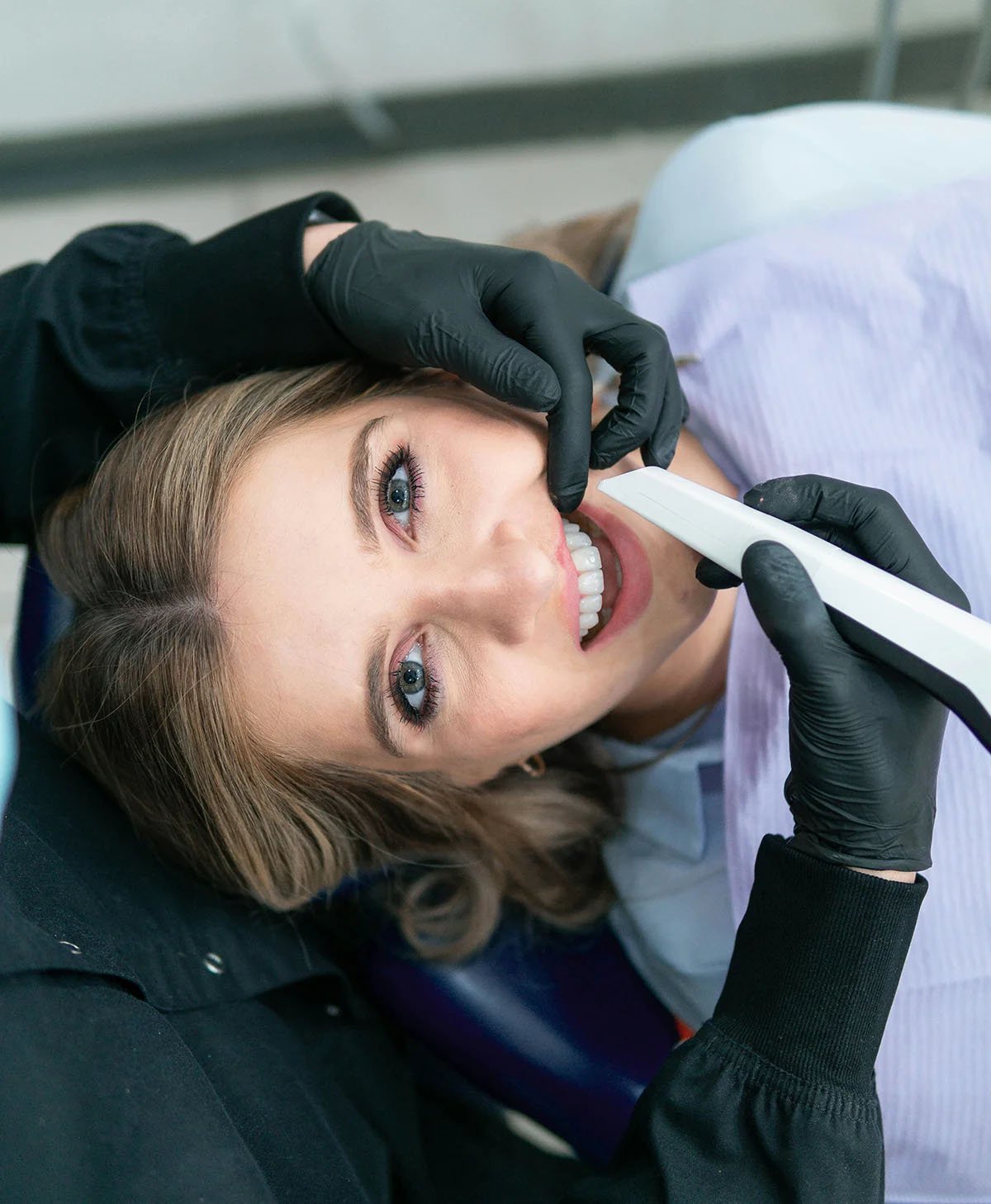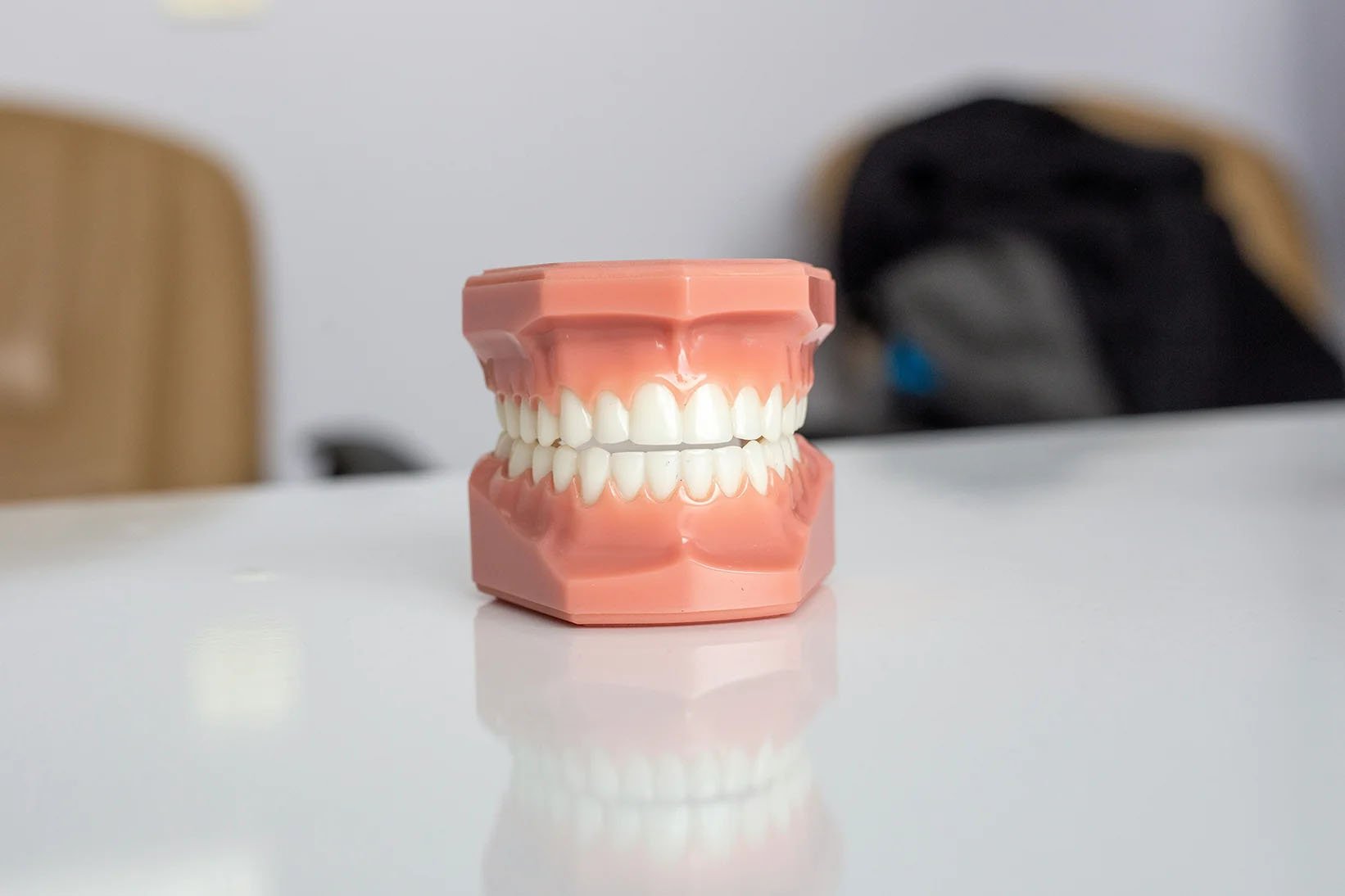Gum Graft & Gum Surgery
Restore your gum health, reduce sensitivity, and improve your smile with professional gum grafting procedures at Selkirk Dental.
What Are Gum Grafts?
Gum grafting is a proven treatment for gum recession—a condition where your gums pull away from the teeth, exposing the roots. This exposure can lead to tooth sensitivity, tooth decay, and eventual bone loss. Gum graft surgery involves placing soft tissue (from your own mouth or a tissue donor) over the exposed areas to protect your teeth and restore your gumline.
Gum grafting is both a cosmetic and preventive procedure, often considered a form of periodontal surgery. While it improves the appearance of your smile, its main goal is to restore gum health and prevent further damage to the teeth and jawbone.
Book An In-Person Consultation
Want to know if you are a candidate for gum grafting for a healthier smile? Book an in-person consultation.
Who needs Gum Graft Surgery?
Gum grafts are recommended for patients with mild to severe gum recession, especially in the following circumstances:
Gum Recession
The natural gum tissue has thinned or worn away, leaving roots vulnerable. This can happen from overbrushing, grinding, or gum disease.
Gum Disease
Advanced periodontal disease causes gum loss, bone deterioration, and increased risk of tooth loss. Grafting helps halt the damage and provides crucial root coverage.
Other common causes include:
Orthodontic treatment (braces)
Genetics and family history
Hormonal changes (pregnancy, menopause)
Trauma or injury to the gums
Gum Graft Procedure
Here’s what the process usually looks like:
Evaluation & Planning
Your dentist assesses the gum recession and chooses the appropriate grafting method. Book an appointment with a Selkirk Dental gum specialist to start your gum tissue evaluation process and find out if a gum graft is the right solution for you.
Graft Collection
The process begins with harvesting the tissue needed for the graft. In most cases, the tissue is gently taken from the roof of your mouth (palate). In certain situations, porcine (pig) tissue may be used as a supplement. Your dental professional will ensure that the collection site is minimally invasive and heals quickly.
Graft Placement
Once the tissue is ready, it is carefully positioned over the receded gum area. The graft is then secured in place with fine sutures, ensuring that it stays in place while it heals. Both the collection and placement of the graft are typically completed in a single session, and the entire procedure is performed under local anesthesia to ensure comfort.
Recovery
You’ll receive detailed aftercare instructions to support proper healing and minimize discomfort. In the first 24–48 hours, it’s normal to experience mild swelling, tenderness, or minor bleeding. Most patients begin to feel better within a few days, and initial healing typically takes 1–2 weeks. During this time, you'll be advised to eat soft foods, avoid brushing the surgical site, and refrain from strenuous activity. Full tissue integration may take several weeks, but with good oral hygiene and follow-up visits, your recovery should be smooth and successful.
What To Know About Gum Recession Surgery
If you’ve been diagnosed with gum recession, your dentist or periodontist may recommend a dental procedure, such as gum recession surgery, to restore lost gum tissue and prevent further damage to your teeth. The procedure is typically quick, minimally invasive, and performed under local anesthesia (with sedation, if you wish), ensuring a comfortable experience for our patients. With proper aftercare, the healing process is generally straightforward and uneventful. There are several options for addressing gum recession, and your dentist will help determine the best procedure for your specific needs.
The Minimally Invasive Tunnel Graft
The Minimally Invasive Tunnel Graft is an advanced technique for treating gum recession that involves minimal incisions to gently access the affected area. In most cases, this procedure uses the patient’s own tissue, carefully repositioned through small access points and placed over exposed tooth roots. In select cases, porcine (pig) tissue may be used as an alternative. This method avoids the use of tissue bank grafts, resulting in a more natural integration and reduced risk of complications. With no need for extensive cuts or stitches, patients experience a more comfortable procedure and faster recovery. Ideal for those with moderate gum recession, the tunnel graft offers a highly effective, less invasive solution with natural-looking, long-lasting results.
Free Gingival Graft
A free gingival graft involves transplanting a thin layer of tissue from the roof of your mouth (or a donor source) to the receded gum area. This graft is primarily used to cover exposed tooth roots, protect against sensitivity, and restore the natural contour of your gums. It's often chosen for patients with moderate gum recession where only a thin layer of tissue is needed to enhance the gumline. The gingival graft is particularly effective in cases where the gum recession is localized and does not require a significant volume of tissue. This procedure is less invasive, making it ideal for addressing areas with mild to moderate recession.
Connective Tissue Gum Graft
The connective tissue graft is a more specialized technique typically recommended for patients with more severe gum recession or when additional gum thickness is required. During this procedure, tissue is harvested from beneath the surface of the palate. This type of graft tissue is highly effective for covering exposed tooth roots, adding volume to the gums, and providing extra protection against further recession. A connective tissue graft is often the preferred choice when the recession is more advanced, or when the patient requires more robust tissue to support a thicker gum line. This method is ideal for patients with significant gum tissue loss or when more substantial coverage is necessary to prevent additional damage.
Lateral Pedicle Flap Graft
The Lateral Pedicle Flap Graft is a specialized technique often used when there is adequate gum tissue near the affected area. In this procedure, a flap of tissue from a nearby, healthy area of the gum is lifted and repositioned to cover the receded area. The flap retains its original blood supply, which helps promote faster healing and ensures that the graft integrates well with the existing tissue. This method is ideal for patients who have sufficient adjacent gum tissue to be moved over, offering a natural-looking result with minimal need for additional tissue harvesting. The procedure is highly effective in treating localized gum recession and provides long-lasting results.
Local Anesthesia & Sedation
At Selkirk Dental, we prioritize your comfort throughout your gum graft procedure. We use local anesthesia to numb the area being treated, so you won’t feel any pain during the surgery. This means you'll remain fully awake and aware, but completely comfortable, while your dental team works to restore your gum health. For patients who may feel anxious or nervous about the procedure, we also offer sedation options. These can help you feel relaxed and at ease during the treatment. Our team will discuss all available options with you before the procedure to ensure you choose the one that best meets your needs. Whether you’re undergoing a simple graft or a more complex procedure, we’ll make sure you're comfortable every step of the way.
Dental Implant FAQs
-
The cost of a gum graft in Canada can vary depending on the complexity and number of teeth treated. On average, gum grafting costs range from $600 to $1,200 per tooth. Consultations can help determine exact pricing and if your insurance covers it.
Most dental plans cover gum grafts when medically necessary. We also offer financing options for patients without insurance.
-
Not during the procedure—local anesthesia makes it virtually pain-free. You may feel mild discomfort after, which is manageable with over-the-counter or prescribed medication.
-
With good oral hygiene and regular dental care, gum grafts can last a lifetime. It’s important to treat the cause of gum recession to prevent future issues and maintain your overall oral health.
-
While rare, possible complications include infection, graft failure, or bleeding, which could ultimately lead to further gum recession. Choosing an experienced provider and following aftercare instructions significantly reduces these risks.
-
Avoid smoking, brush gently, and follow any specific instructions given during your consultation. Your provider will walk you through everything you need to know.

Book An In-Person Dental Consultation
Think you might need gum surgery or a graft? Book a professional evaluation at Selkirk Dental. We’ll assess your gums, explain treatment options, and walk you through costs and recovery.








